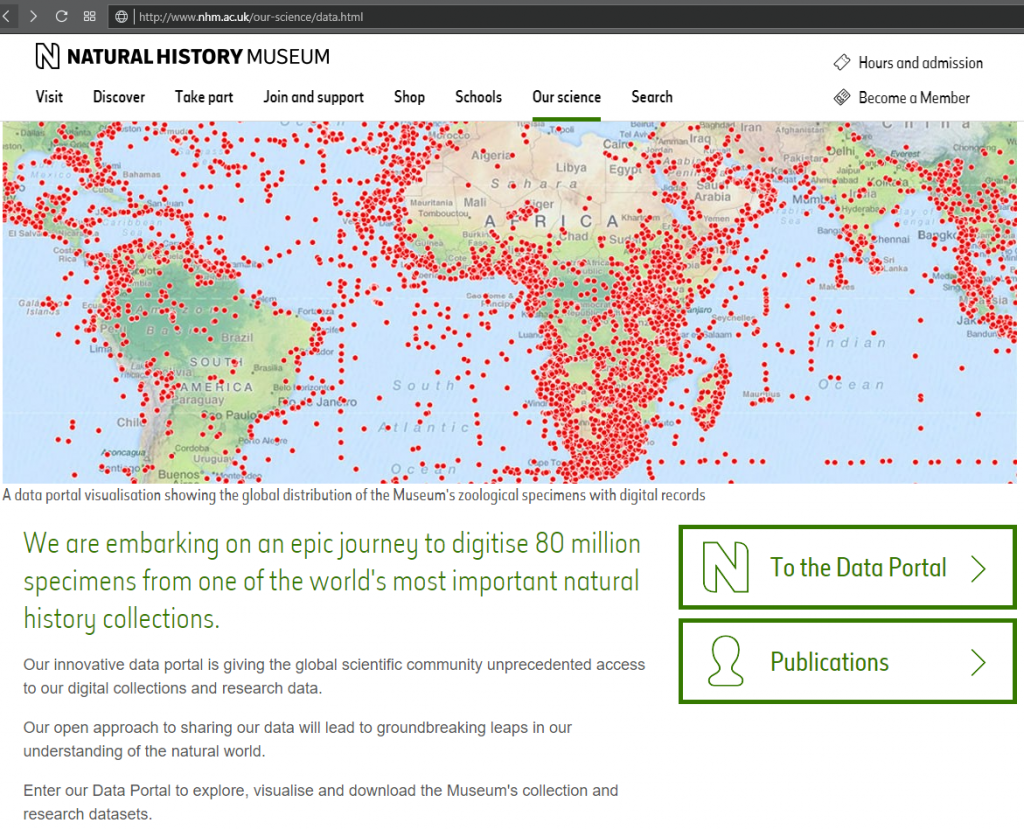Most Museums are known for their large collection of exhibits and even bigger repository in storage. These artefacts represent information, regardless if publicly available or in storage. This post will take a view on the digitalisation of this information, current data collections and how the content is shared.
Between the different scientific departments, this information is mostly trapped in several non-IT systems (Wentz, 1989) as they have existed long before computerization. Museums always embraced Knowledge Management (KM), in order to establish a better the future by learning from data of the past (McCrank, 2001).
Due to the diversity of information sources and requirements, a choosing of a target information system, sometimes called Archival Information Systems (AIS), needs to be planned carefully. It must be accounted for how the information can digitalized and ultimately stored. The choosing of a format for data storage is another challenging one, especially when it comes to objects – they could be just described (in a short text), an image of agreed resolution could be created, or they could be 3D scanned which would allow for 3D playback or even replication if required (Chen, Chang, & Huang, 2014). Where Wentz (1989) citied Laserdiscs, today one expects DVD or Blu-ray, which does offer new dimensions of data storage, showing that even if the data is not modified, it will be required to move from legacy Information technology system to newer ones.
Once data is stored in an AIS, the question is how it will be shared, as a public access is not automatically granted and museums often must obey their owners in that matter, especially if it is a state/country run museum (Times of India, 2012). The author can only speculate that country and their obliged scientists/companies think they can benefit from such restricted access to knowledge. Connecting data entries from several science fields would allow for new data mining across several fields, yielding insights that may be financial or otherwise beneficial.
The NHM London does share most of its digital data freely online for everybody, see figure 1, allowing for new information systems interconnections between different museums or alike.

Figure 1: NHM Data Portal
Source: Screenshot from http://www.nhm.ac.uk/our-science/data.html by the Author
For a museum, the usual way of sharing data is a rather static presentation of results, but with the increased use of Multimedia consumption, visitors appreciated active content consumption. This could be done by a visitor information system, which could contain original scientific material and content for easy consumption of scientific knowledge by the public (Linge, et al., 2007). This content would be played back interactively, showing animations or videos, replacing audio guides as they are known today.
The author would like to thank the NHM London, UK and Senckenberg Museum Frankfurt, Germany to be a member and experience information sharing in the various information systems first hand.
References
Chen, C.-Y., Chang, B. R., & Huang, P.-S. (2014). Multimedia augmented reality information system for museum guidance. Pers Ubiquit Comput 18, 315–322.
Linge, N., Bates, D., Holgate, R., Parsons, D., Webb, P., Hay, D., & Ward, D. (2007). miguide:a wireless context driven information system for museum visitors. (pp. 1-12). Salford, Manchester: USIR/UOS. Retrieved from http://usir.salford.ac.uk/968/
McCrank, L. J. (2001). Historical information science: an emerging unidiscipline. Medford: Information Today.
Times of India. (2012). Sarnath museum starts its digitalisation. VARANASI: Times of India. Retrieved from https://timesofindia.indiatimes.com/city/varanasi/Sarnath-museum-starts-its-digitalisation/articleshow/16553605.cms
Wentz, P. (1989). Museum Information Systems: The Case for Computerization. The International Journal of Museum Management and Cwatorship, 313-325.
